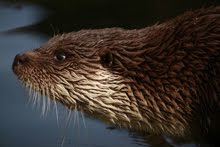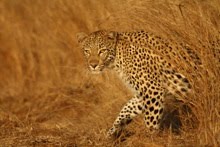As a teenager, I was fortunate enough to meet a wonderful professor who was working on long-tailed wagtails in Westville (just outside of Durban, South Africa). Accompanying Steven Piper on his early morning wagtail ringing and monitoring trips was an absolute dream. His sense of humour, insight, patience and tenacity
 inspired me in to a life of biology. Later on, at university, he was always there with a bit of sound advice and encouragement. He gave me a job as a research assistant: first with the tedious job of entering wagtail morphometric data, and later, fleshing out a massive database of every single Cape Griffon Vulture nesting or roost site ever documented. He encouraged and coached me in to becoming a decent designer of databases and database management. For a good few years I had the honour of having him in my life. Wagtails (and vultures) will - forever - be an inextricable part of who I am and how I see the world. Steven Piper passed away last Sunday:
inspired me in to a life of biology. Later on, at university, he was always there with a bit of sound advice and encouragement. He gave me a job as a research assistant: first with the tedious job of entering wagtail morphometric data, and later, fleshing out a massive database of every single Cape Griffon Vulture nesting or roost site ever documented. He encouraged and coached me in to becoming a decent designer of databases and database management. For a good few years I had the honour of having him in my life. Wagtails (and vultures) will - forever - be an inextricable part of who I am and how I see the world. Steven Piper passed away last Sunday:Prof, you will always live in my heart. Thank you for all you have done for me and so many others like me.The first time I ever saw a dipper was near San Vito in southern Costa Rica. I was along a mountain stream in the middle of nowhere when I came across a bird that acted like a wagtail, but did not look like one. I had no idea what it was. It ran around the rocks picking up little things at the waters edge, just like a long-tailed wagtail (mountain wagtail).
Imagine my flabbergasted surprise when the little thing leapt in to the stream and disappeared.
What the hell was that!

I spent ages watching the American Dipper (Grauwasseramsel) that day - fascinated by its bizarreness. And I just wanted to share that day with Prof Piper - to show him the fabulous little bird I had found!

Dippers still fascinate me, but here in the Alps of Tirol I get to watch the White-throated Dipper (Wasseramsel). In Winter they tend to leave the mountain streams and congregate along the larger rivers and one can often find dozens of white-throated dippers scouring and swimming the length of the River Inn - even right in the center of Innsbruck itself! In Springtime, most of the dippers leave the Inn for the smaller side streams that lead up in to the mountains. In fact, most already seem to have done this as there are very few dippers still along the Inn. A good spot in Innsbruck to find white-throated dippers year-round is along the Sill River - go to Sill Park Shopping Center, have a cup of coffee in the Spar restaurant, and watch the stream for wagtails, dippers, and kingfishers - can't complain about that!
In May I join some of the guys from Swarovski Optik on a trip to Kazakhstan (it is a new product launch...) to see the conservation project they are supporting there (BirdLife species champion of the Sociable Plover - Gemeine Kibitz). I am really holding my thumbs to try to get some decent photos of the Brown Dipper (Flusswasseramsel) and - with some luck - an absolute CMF: the Ibisbill !!! (Ibisschnabel)
happy birding (and wagtailing!)
Dale
Note: the images in this post are not mine, but are creative commons property with links to their owners' websites.










.jpg)








.jpg)



4 comments:
Hi Dale,
Steppenkiebitz is the Sociable Plover or Latin Vanellus gregarius.
Just catching up on some blog reading. I'm sorry to hear about the loss of your friend and mentor. We, both people and birds, are lucky to have such knowledgeable and helpful people in the world.
I saw my first dipper, the American Dipper, last summer in Oregon. It was such a cool bird to watch hopping around, bobbing up and down and even yanking huge, disgusting looking larva out of the stream.
What a great thing to have somebody in your life like that. I am sorry for your loss. I too am a big fan of Dippers as you may know from reading my blog. I really like the picture of the White Throat is beautiful and makes for a nicer looking bird compared to the bland American Dipper.
BTW thank you for responding to my question about blogging. I really appreciate it.
Dave
hi dave, you are right, the white throat is fabulous. when sitting on a perch or stone (as in the picture) they will often bob up and down - a comical picture of a round bird bobbing. great to see. if you ever manage to get over to the alps, I would be more than happy to show you one!
Post a Comment